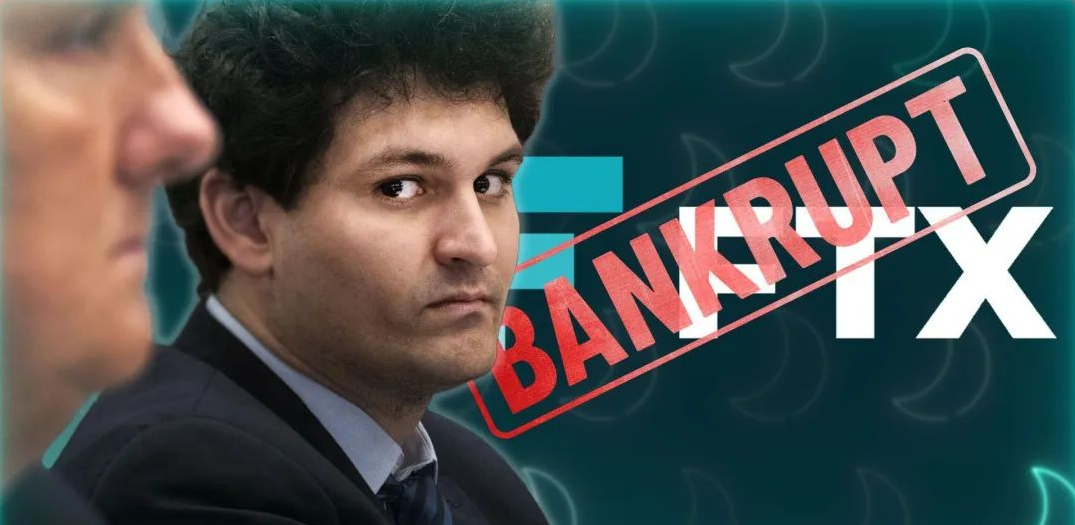Mosaic/Coinbase Joint Report: Development Status of Anonymous Coins
As far as methodology is concerned, the “Development Status of Anonymous Coins” research report consists of two parts, from public Internet surveys and darknet surveys:
- The first item is called the "2019 Anonymous Currency Survey." The purpose of this study was to discover different prototypes of anonymous currency users and to understand the perceptions and behaviors of anonymous currency users on the public Internet. In order to collect as much sample information as possible, the survey was shared on different social media platforms such as Twitter, LinkedIn, Bitcointalk and various chat groups. We found a total of 236 participants who participated in the survey anonymously, but most were willing to inform them about their gender, age and location.
- The second item, called "dark net research," focuses on use cases and user behavior of using anonymous coins in dark networks. We used the Tor browser to sneak into 44 markets that accepted anonymous currency and contacted users anonymously on 50 message boards.
Readers may be curious, why do you want to report on anonymous coins?
First, from our observations, the view of the cryptocurrency industry is generally composed of different groups and usually revolves around specific cryptocurrencies on different social media platforms. Since information and discussion are decentralized, this inevitably leads to deviations in the understanding of the industry and its segments.
Second, since the purpose of anonymous currency is to confuse the identity of each financial activity and its participants, the types of information we can collect from participants are unique, such as gender, age, and location of activity, which is rare on the Internet. data.
- Jianan listed plans to raise 100 million US dollars, the source: or due to the poor performance of the road show, the amount of funds raised
- The hacker group Anonymous announced the establishment of a $75 million Bitcoin fund to boost privacy technology and cryptocurrency development
- Viewing the Governance and Game Theory under the Chain from the Merchant Law in the Middle Ages
Of course, because the sample size is relatively small, the research results do not represent the entire anonymous currency community. The results of the survey may be biased towards certain currencies. For example, the Zcash Foundation shared its first survey on Twitter, which may bias the results toward Zcash. Still, this report is still an important cornerstone for us to better understand the ecology of the anonymous currency. We also intend to publish similar studies for other cryptographic asset classes in the future.
One point: This report is not an endorsement of any type of anonymous currency, the nature of which is the study of industry classification levels.
Let us now look at the actual results:
- The following three images will answer users who are anonymous. Although 17% of participants are reluctant to disclose their gender, most users are male. Women only account for 5%.

- Most of the participants were born between 1980 and 1993. In other words, they are between the ages of 26 and 39.
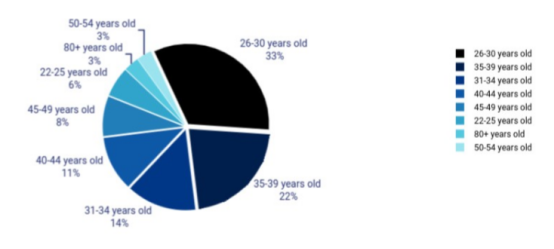
- 67% told us that they live in North America or Europe. Unsurprisingly, 32% of users are from the United States. However, Anonymous currency does not appear to be as popular in China as it is in China.
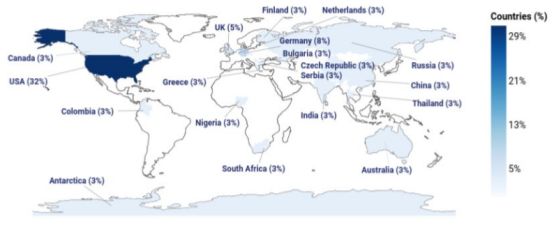
- In the next seven figures, we will delve into the details of the ownership of the anonymous coin and the buyer's decision-making process. 67% of respondents said that the first time they bought an anonymous currency was Zcash or Monero, 42% and 25% respectively.

- In addition, most anonymous currency users are new to the game. Forty-six percent of participants said they bought an anonymous currency from the exchange one or two years ago, in other words, sometime between 2017 and 2018. And a small percentage of them bought their first anonymous coin five years ago.

- Typically, market participants hold one or two anonymous tokens. 47% of respondents told us that they only hold one type of anonymous currency, and 25% have two anonymous tokens in their encrypted portfolio. Interestingly, 11% of users hold more than 5 privacy-protected encryption assets.

- Now you may ask, what kind of anonymous currency do users usually hold? Most of the respondents said that they either hold Zcash, hold Monero or Zcoin, or hold all of them (for those who have more than 2 anonymous coins) Said).
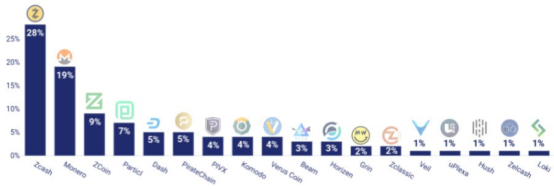
- 53% said that anonymous coins account for 50% to 100% of their net worth of encryption. Interestingly, contrary to the BTC community, maximizing the type of anonymous currency investment is not a mainstream philosophy. In fact, 17% of participants only have anonymous currency and no other encryption assets such as BTC or Ethereum.
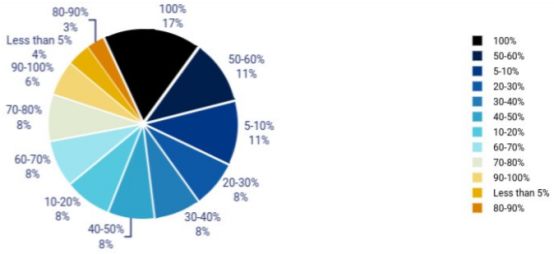
- As part of the decision making process, we want to know how they know about anonymous coins. At the beginning we thought that word of mouth marketing was the most important method, but only 6% of the respondents mentioned word of mouth marketing. Interestingly, social media such as Twitter and YouTube, as well as cryptocurrency data providers such as CoinMarketCap, seem to have dominated the information channel.

- In the decision-making process, the reasons for participants to decide to invest are quite diverse. Twenty-five percent said they invested in a potential technology for an anonymous currency, and 11% decided to put the treasure on a capable team. A few people want to put money into the next or better BTC.

- On the public Internet, a small number of participants stated that they purchased goods and services using anonymous currency. They usually buy furniture, gift cards, clothes, pay for web hosting services, or make charitable donations.

- Monero and Zcash are also the most popular anonymous currency exchange media, followed by the anonymous coin PART on the peer-to-peer market Particl.io. Most participants purchase goods or pay for services on a monthly or yearly basis, or weekly and quarterly.

- 98% of dark network merchants accept BTC. In 10 markets, Monero ranks second among the most accepted encryption assets. However, Zcash is behind, with only 2 supported merchant sites.

- On 50 message boards, 75% of the responses from market customers and suppliers mentioned that Monero is the most reliable private payment method on the Internet.
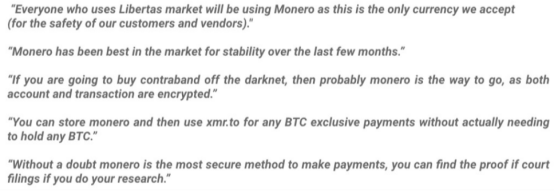
- When it comes to using anonymous currency as a medium for storing value, there is a consensus that storage value seems to be a better use case. Eighty-nine percent of respondents said they would use privacy-protected encrypted assets as a substitute for gold, fiat money, or BTC. Zcash and Monero became the first option. Unexpectedly PART, the anonymous currency on Particl.io. 10% of participants believe that PART is a good way to store value because its anti-sybill mechanism relies on Staking rather than proof of workload like BTC.

- 35% of respondents said that in order to find alternatives to BTC, they use anonymous currency as a means of value storage. Others mentioned the benefits of anonymity when looking for alternatives to protect property security.

- Our research team is keen to know how often people buy more anonymous coins. 61% of participants told us that they accumulate more anonymous coins every quarter or month or year. In addition, most respondents indicated that BTC is the most popular payment method for exchanges, while legal tenders such as the US dollar or the euro account for only 33%.
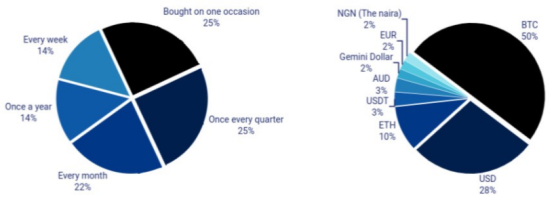
- As far as the mining of anonymous coins is concerned, the results show that this is not the main activity of the user. Only one-third of the participants are miners, 40% of whom are Zcash miners. Surprisingly, none of the respondents were Monero miners.

- Regarding the use of barriers, user opinions are divided and scattered. 18% believe that the main factors hindering the use of anonymous currency are the complex user experience of wallets and exchanges. Others blame it on the lack of introductory tutorials, and others have mentioned the lack of real-world demand from users.

- But what's important is that while some people think that user experience (UX) is the main obstacle to accepting anonymous currency, overall, the average user experience is 7.2/10. However, the recently launched Angin coin Grin is behind the score of 4/10.

We will continue to update Blocking; if you have any questions or suggestions, please contact us!
Was this article helpful?
93 out of 132 found this helpful
Related articles
- The Swiss Stock Exchange is based on the XTZ-based ETP, and investors can get XTZ staking income.
- Morgan Creek CEO: Every asset in the world will be tokenized, selling Amazon stock to buy bitcoin
- Getting started with blockchain | 10 common misconceptions about blockchain and cryptocurrency
- Do not blow black, a quick overview of the 2019 cryptocurrency 10 development trend
- Last year’s battle, this year’s cold and clear, BCH upgraded this year?
- QKL123 Quote Analysis | Libra will replace Ethereum? Unable to help themselves! (1114)
- Speed | Cryptographic Currency Derivatives Exchange: Clearing Mechanism; Bitcoin and "Great Wealth Transfer"

